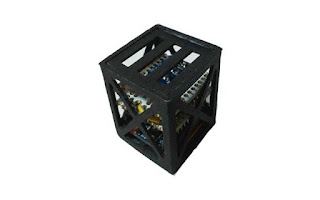The
Goods and Services Tax or GST is scheduled to be launched on the 1st
of July, and it is set to revolutionize the way we do our taxes.
GST is an indirect taxation wherein most of the existing taxes
will be merged into a single taxation system. It will be the
biggest tax reform since Independence. The major flaws in the current
tax system such as cascading of taxes,multiplicity of law and taxes,
non-fungibility of credits between goods and services and various
distortions existing may be removed by this destination based tax
system.
GST in
India is a comprehensive,
multi-stage, destination-based tax that will be levied on every value
addition. The introduction of GST is part of the Government's
tax reform programmed to enhance the efficiency and effectiveness of
the existing taxation system. GST is proposed to replace the current
consumption tax i.e. the present principle of origin based
taxation. Under this , there will be tax only on value addition at
each stage, with the producer/seller at every stage able to set off
his taxes against the central/state GST paid on his purchases. The
end-consumer will bear only the GST charged by the last dealer in the
supply chain, with set-off benefits at all the previous stages.
The
current multi-staged tax structure has charges from the State and
Union governments separately, leading to cascading effect of
taxes. GST brings in uniform tax laws across all the states
spanning across diverse industries. The central taxes that would
now be replaced by GST are; service tax, special additional duties of
customs (SAD), Additional Duties of Excise (goods of special
importance), Central Excise Duty, Additional Duties of Customs
(commonly known as CVD), Duties of Excise (medicinal and toilet
preparations), Additional Duties of Excise (textiles and textile
products) and Cesses and surcharges in so far as they relate to
supply of goods or services. On the state level that taxes that GST
will subsume include: State cesses and surcharges, luxury tax, state
VAT, purchase tax, central sales tax, taxes on advertisements,
entertainment tax (not levied by local bodies), entry tax (all forms)
and taxes on lotteries, betting and gambling.
GST
rates on goods and services have been broadly classified into four
tax rates: 5 per cent, 12 per cent, 18 per cent and 28 per cent. Some
goods and services would be exempt. Precious metals like gold will
attract a separate tax rate of 3 per cent. A cess will be levied over
the peak rate of 28 per cent on specified luxury and sin goods. Under
GST, businesses are required to file returns each month. But the
government has let companies file late returns for the first two
months so that they can adapt to a new online filing
system. Petroleum products such as petrol, diesel and aviation
turbine fuel have been kept out of GST as of now. The GST Council
will take a decision on it at a later date. Alcohol has also been
kept out of GST.
GST
will basically have three kinds of taxes namely Central, State
and integrated GST . The GST to be levied by the
Centre would be called Central GST (CGST) and that
to be levied by the States (including Union territories with
legislature) would be called State GST (SGST). An Integrated
GST (IGST) would be levied on inter-State supply (including
stock transfers) of goods or services. This would be collected by the
Centre. Import of goods would be treated as inter-State supplies and
would be subject to IGST in addition to the applicable customs
duties. Exports will be treated as zero-rated supplies which means no
tax will be payable on exports of goods or services. However,
exporters can claim input tax credit.
GST
is a better and more efficient method of revenue collection for the
government. More funds can be channeled into nation-building projects
for progress towards achieving a high income nation. GST will
ensure a complete, comprehensive and continuous mechanism of tax
credits.
GST
is proven to be a better tax system as it is more
effective, corruption-free tax
administration, efficient, transparent and business
friendly and could spur economic growth as well as increase
competitiveness in the global market. I think GST will be a game
changer which will turn India as a unified market to business
owners and brings a lot of black money back into the
mainstream economy. Being a consumption based tax, tax
collection will go to the states in which the goods are consumed, and
not where they are manufactured. Hope that GST will
disincentivise tax evasion,that means, if you don’t pay tax on what
you sell, you don’t get credit for taxes on your inputs.


